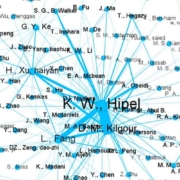The Castle-Bound Prince Syndrome: The Isolation of Power and the Distortion of Reality
In organizations and institutions around the world, both public and private, there exists an invisible and powerful dynamic that isolates leaders from the everyday realities they should be governing or managing. This phenomenon, which I call the Castle-Bound Prince Syndrome, refers to the inevitable disconnection between decision-makers and the true circumstances surrounding their actions. Just like medieval princes locked away in castles, modern leaders often find themselves isolated by a layer of intermediaries—”towers” that filter, adjust, or even distort information before it reaches the “prince” at the top.
The Castle-Bound Prince Syndrome has its roots in something very human: the way power and organizational hierarchy function. At the top of the structure, leaders often rely on their subordinates, advisors, and managers to obtain information that will shape their decisions. However, these intermediaries, in turn, also have their own agendas, fears, and interests. They may distort the reality they present, either out of fear of negative repercussions or to protect their own positions. The result is that the leader—the “prince”—begins to act based on a partial, filtered, and often completely disconnected view of what is truly happening.
The Origin of the Concept
The Castle-Bound Prince Syndrome is not a concept that emerged theoretically or academically. It was born from practical observation and direct experience I had over the years while working in strategic positions, especially in the public sector. The first time I noticed this dynamic was during my involvement in managing social media and political campaigns in the early 2010s, when I made my first notes about this idea. Engaged behind the scenes of politics, I closely witnessed how leaders—often well-intentioned—made crucial decisions based on information that, although it passed through various layers of analysis and filters, often did not reflect the complete reality. These leaders, like princes isolated in castles, became hostages to their towers of information, without direct access to what was truly happening in the “kingdom.”
Over time, I began to understand that this syndrome was common, not only in the public sector but also in large corporations and other hierarchical organizations. The gap between operational reality and decisions made at the top was a structural problem. What began as a specific observation transformed, for me, into a key concept for understanding how many institutions fail to reach their true potential.
The Impact of the Syndrome
The Castle-Bound Prince Syndrome has profound consequences. A leader isolated from reality tends to make decisions based on incomplete or distorted information, which in turn leads to errors in judgment that can be costly for the organization. In the public sector, this can mean misdirected policies that fail to meet the real needs of the population. In the private sector, it means business strategies misaligned with market realities, leading to financial losses and stagnation.
The perpetuation of this syndrome creates a cycle of disconnection and stagnation. The further the leader is from reality, the more difficult it becomes for him or her to correct the course of action and make well-founded decisions. Moreover, the intermediaries—the “towers”—have incentives to maintain this informational barrier, either to protect their positions or to avoid conflicts.
Connection with the “Circle of Mediocrity”
Here, an important connection arises with another concept I developed over the years: the Circle of Mediocrity. The Circle of Mediocrity describes a vicious cycle where mediocre practices are perpetuated within an organization. In many institutions, especially in the public and educational sectors, everyone pretends to fulfill their roles—teachers pretend to teach, students pretend to learn, managers pretend to supervise—while actual performance is far from ideal.
The Castle-Bound Prince Syndrome and the Circle of Mediocrity are intrinsically linked. When a leader is isolated from reality, he or she becomes unable to perceive the mediocrity permeating the organization. This isolation creates the perfect conditions for the Circle of Mediocrity to thrive, as there is no real or effective supervision to break this cycle. The leader, shielded by the organization’s “towers,” continues to believe everything is functioning properly, while mediocrity keeps perpetuating at the lower levels of the structure.
This cycle reinforces the leader’s disconnection, which in turn perpetuates mediocrity. To break this cycle, it’s necessary not only to correct the lack of informational transparency but also to challenge the mediocre practices ingrained in the organizational culture. You can see more about the Circle of Mediocrity here: LINK.
References and Academic Influences
The concept of the Castle-Bound Prince Syndrome did not emerge from a vacuum. It is directly related to various academic theories that address power, information, and governance. Among these influences, the work of Michel Foucault stands out, particularly his theory of the microphysics of power. Foucault argues that power is exercised not only in a centralized manner but through networks of control and surveillance at all levels of society. The Castle-Bound Prince Syndrome reflects this idea by showing how control over the flow of information in an organization, and the power it grants, contributes to the isolation and distortion of reality perceived by leaders.
Additionally, concepts from Agency Theory (Jensen and Meckling, 1976) are fundamental to understanding this syndrome. The asymmetric information between the principal (the leader) and the agents (subordinates) plays a crucial role in distorting the information that reaches the top of the hierarchy. This results in suboptimal decisions and reinforces the leader’s isolation—a classic problem in environments where agents have incentives to conceal the truth or manipulate data.
Herbert Simon’s (1955) theory of bounded rationality also contributes to the understanding of the Castle-Bound Prince Syndrome. Simon argues that decision-makers have a limited capacity to process information and therefore tend to settle for “good enough” solutions rather than seeking the ideal solution. In practice, this means that isolated leaders, upon receiving limited and filtered information, make suboptimal decisions since their options are restricted by the partial and distorted information presented to them.
Game Theory and Conflict Analysis
Another relevant aspect of the Castle-Bound Prince Syndrome can be explored through Game Theory, developed by John von Neumann and Oskar Morgenstern. Game Theory provides a mathematical framework to analyze situations where multiple agents interact strategically. In the context of the syndrome, the leader (or prince) and his subordinates are engaged in a kind of strategic “game,” in which each agent (intermediaries, advisors, and subordinates) has their own incentives and strategies.
Within this “game,” a Nash equilibrium can be reached when no agent has an incentive to unilaterally change their strategy, which often results in a suboptimal state for the organization as a whole. Subordinates, concerned with their own positions, have incentives to filter the information that ascends the hierarchy, protecting their interests and avoiding conflicts with their superiors. The leader, in turn, may believe they are receiving adequate information, and their decisions reflect this suboptimal equilibrium state.
Game Theory also helps analyze conflicts of interest between hierarchical levels. For example, intermediaries have incentives to distort reality to avoid personal risks, while the leader, unaware of the game being played, makes decisions based on a false perception of the situation. This scenario exemplifies a “game of incomplete information,” where the leader does not have full access to the strategies and motivations of subordinates, resulting in decisions that perpetuate disconnection.
Academic Interest and Future Exploration
As PhD student in Economics, I realize that the Castle-Bound Prince Syndrome represents a rich opportunity to model behaviors in institutional contexts. Understanding how information degrades as it moves up the hierarchy and how decisions can be distorted by this disconnection is fundamental for developing more robust economic models. My academic interest lies in exploring how these processes can be mathematically represented and quantified to allow a deeper analysis of the syndrome’s impacts on organizational efficiency. This is an area I intend to explore in more detail in my future research, seeking to integrate aspects of decision theory, asymmetric information, organizational incentives, and Game Theory. The idea is to understand how interactions between leaders and subordinates, mediated by distorted information flows, can be formalized in economic and mathematical models that reflect the reality observed in various institutions. These models can help predict how suboptimal decisions are made and develop strategies to mitigate the impacts of the Castle-Bound Prince Syndrome.
Possible Solutions
Although the Castle-Bound Prince Syndrome is a common phenomenon in hierarchical structures, it is not irreversible. There are strategies that can be implemented to break this isolation and ensure that leaders have access to more accurate and reliable information.
- Direct Feedback Channels: One of the first steps to mitigate the syndrome is to create direct communication channels between the leader and the operational layers of the organization. This can be done through independent audits, regular consultations with employees, and the introduction of impartial feedback mechanisms. In Game Theory, this would be equivalent to altering the game’s conditions to increase transparency between parties, reducing the incentives for subordinates to distort reality.
- Culture of Transparency: Instituting a culture of organizational transparency is fundamental. When truth is encouraged, intermediaries have less incentive to distort information. Promoting practices that reward honesty and punish information manipulation helps restructure the “game” so that agents’ interests align with those of the organization as a whole.
- Active Participation of the Leader: Leaders must be willing to engage directly with the operational levels of the organization, breaking the barrier of the “towers.” By getting closer to daily operations, leaders can develop a clearer and more accurate view of the realities around them. Reducing the distance between hierarchical levels can decrease informational asymmetry, which is essential in both Agency Theory and Game Theory to lessen the impact of incomplete or distorted information.
Final Considerations
The Castle-Bound Prince Syndrome is a powerful metaphor for understanding the dynamics of disconnection between leaders and reality. Just as princes were isolated in their castles in the past, today many leaders, surrounded by layers of intermediaries, make decisions based on incomplete or distorted information. This phenomenon, when unrecognized, can lead to the perpetuation of mediocre practices and organizational stagnation. Recognizing the syndrome is the first step to breaking it. And by doing so, we can pave the way for more effective, more connected, and more responsible leadership.
The integration of Game Theory and classical Decision Theory approaches offers a powerful tool to understand the strategic behavior of agents within the organization and how this affects the quality of decisions made at the top. Understanding the strategic interactions between leaders and subordinates can help develop solutions that better align incentives, creating an organizational dynamic that minimizes the syndrome’s impacts and promotes more honest and effective communication across all hierarchical levels.
References
- Foucault, M. (1975). Surveiller et punir: Naissance de la prison. Paris: Gallimard.
- Jensen, M. C., & Meckling, W. H. (1976). Theory of the Firm: Managerial Behavior, Agency Costs and Ownership Structure. Journal of Financial Economics.
- Kahneman, D. (2011). Thinking, Fast and Slow. Farrar, Straus and Giroux.
- Tversky, A., & Kahneman, D. (1979). Prospect Theory: An Analysis of Decision under Risk. Econometrica.
- Simon, H. A. (1955). A Behavioral Model of Rational Choice. The Quarterly Journal of Economics, 69(1), 99-118.
- Von Neumann, J., & Morgenstern, O. (1944). Theory of Games and Economic Behavior. Princeton University Press.
Deoclécio Paiva de Castro
Ph.D student in Economics
M.Sc in Mathematical Optimization Modeling and Quantitative Methods
B.Sc in Industrial/Production Engineer



